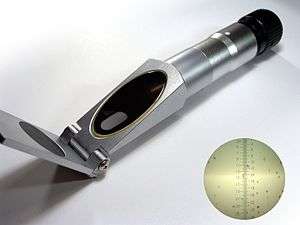Must weight

Must weight is a measure of the amount of sugar in grape juice (must), and hence indicates the amount of alcohol that could be produced if it is all fermented to alcohol, rather than left as residual sugar.[1] While must weight is a commonly used term among wine makers, the physically correct term would be must density.
In Germany and Switzerland it is measured in degrees Oechsle (°Oe) and is an important part of the German wine classification. In Italy, France and Canada the measurement is in degrees Brix, and in the United States it is measured as specific gravity. In Austria the Klosterneuburger Mostwaage (KMW) scale is used. The scale is divided into Klosterneuburger Zuckergrade (°KMW). However, the KMW measures the exact sugar content of the must. The Baumé scale is occasionally used in France and by U.S. brewers. In the Czech Republic and Slovakia, must weight is measured in degrees Normalizovaný moštoměr (°NM).
In France and many other countries, the grape must density is often recalculated to show potential alcohol, the per cent alcohol content that would be the result if the must was fermented to a completely dry wine.
Measuring must weight
Must weights are commonly measured in the vineyard, in order to monitor the ripeness of the grapes, which helps selecting the time of harvest. For such purposes, it is usually measured by using a refractometer. A few grapes are crushed between the fingers and the must is dripped onto the glass of the refractometer. The refractometer will be calibrated in a must weight scale, but is an indirect measure, since the refractometer actually measures the refractive index of the grape must.
See also
References
- ↑ Deutsches Weininstitut: Must weights, accessed on March 26, 2009